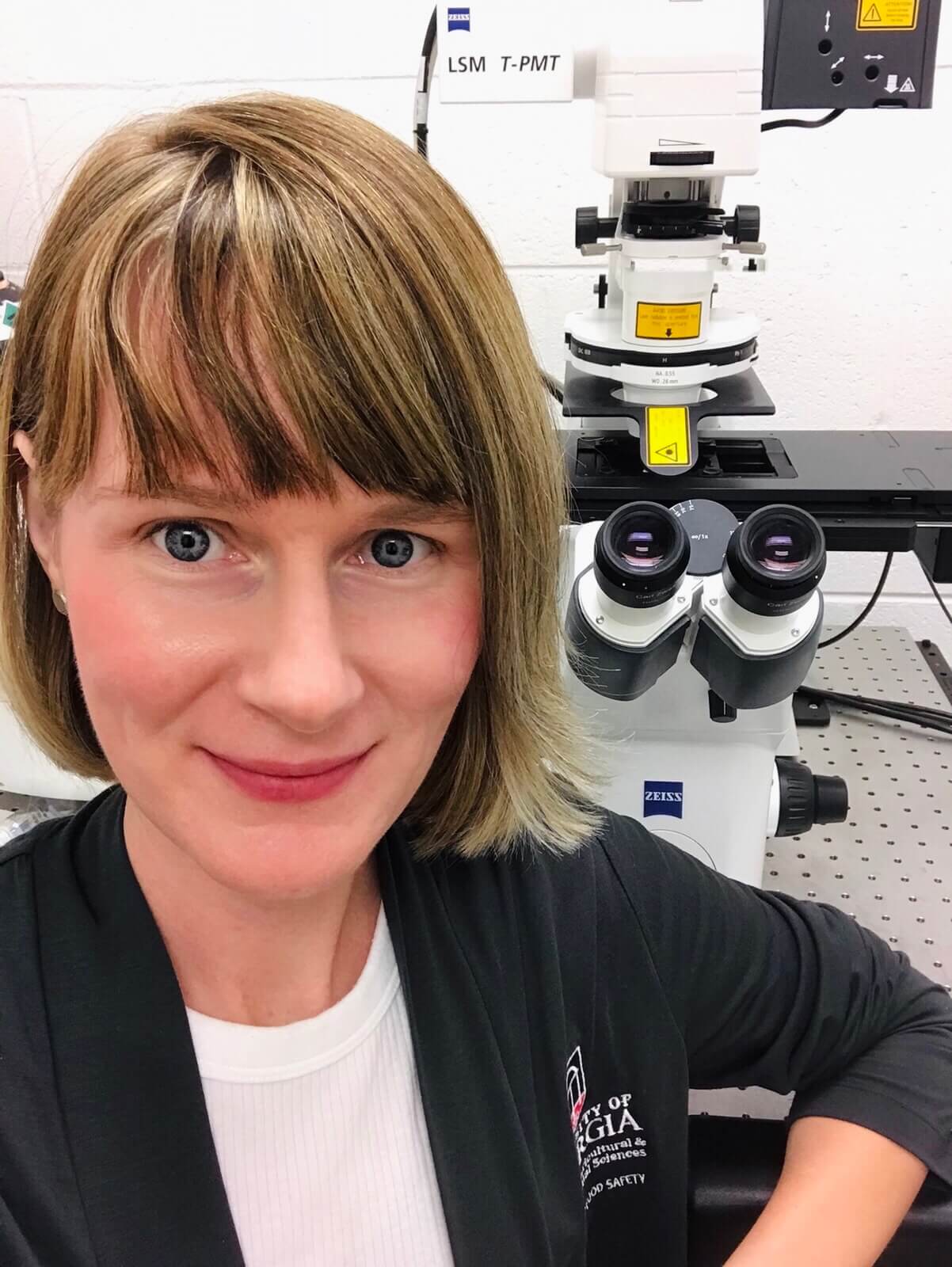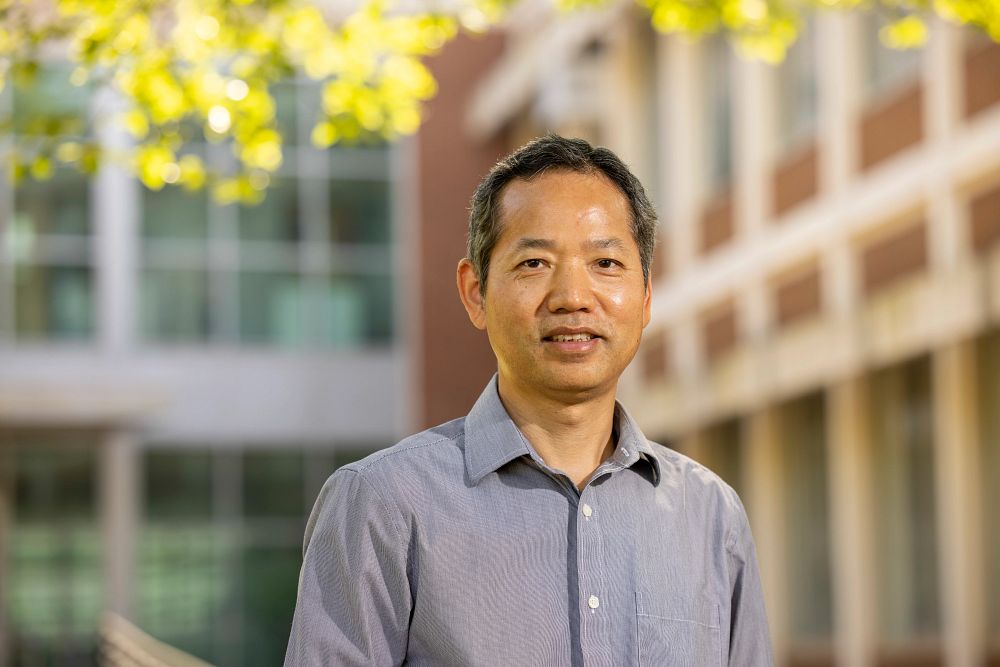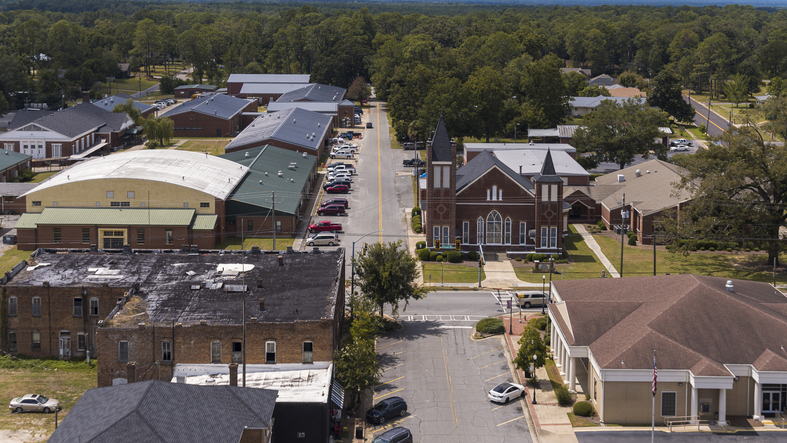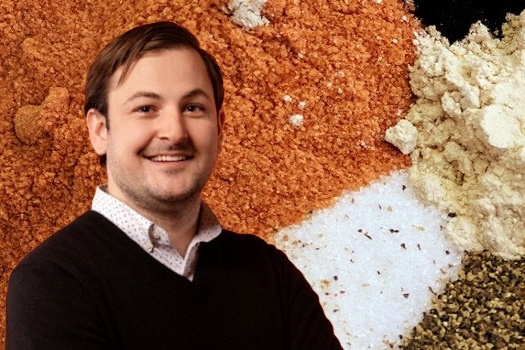.jpg)
Consider your favorite breakfast cereal, granola bar or other packaged food, then imagine the production facility where it is made. If you picture large machines, conveyor belts and lots of moving parts, you get the gist of the environment.
Keeping all these moving parts clean is of utmost concern to manufacturers, who spend considerable time and investment on food safety, making sure their production lines are free from harmful pathogens that may make consumers sick. This often involves chemicals, staff labor and potential production downtime.
A new tool currently under research at the University of Georgia’s Center for Food Safety (CFS) could one day become a standard part of the average food production facility. It is safe for human use, is not harmful to the environment and can be used without downtime.
It is the humble LED. The ubiquitous acronym is shorthand for light-emitting diode, a semiconductor device with two terminals that glow when voltage is applied.
When used in a specific blue light spectrum known as antimicrobial blue light, or aBL, the LED becomes a potent weapon against foodborne pathogens. It can eliminate these pathogens without any physical contact from humans and can work continually without the need for any chemicals. It generates no waste, is low maintenance, affordable, and its placement is very flexible.
A team of researchers at CFS, led by director Francisco Diez, are studying its potential uses in manufacturing facilities. Other team members include Govindaraj Dev Kumar and Magdalena Olszewska, an associate professor at the University of Warmia and Mazury in Olsztyn, Poland, who was a visiting scientist at CFS during work on the project. CFS is a part of the College of Agricultural and Environmental Sciences on the UGA Griffin campus.
The team wanted to know how aBL might be used against biofilms, which pose a serious problem for food manufacturers. Made up of clusters of microorganisms, some harmful to humans, biofilms can endure for years in food processing facilities. Hard-to-reach places are especially vulnerable to their formation and persistence.

“This is a cause for concern because conventional methods may not be effective in eliminating biofilms, posing a risk to food safety. It is crucial to monitor biofilms in food processing settings and take proactive measures to control them,” said Olszewska.
Safer for human use than ultraviolet light, aBL is a cost-effective way of disinfecting surfaces, she said. The technology is already in use in hospitals, but this study represents some of the first research into its use for food safety in a food processing facility.
To better understand how aBL can be used most effectively in food processing facilities, the team examined its effectiveness on a variety of surface materials, such as thermoplastics, steel and rubber. They found that the surface on which pathogens reside plays a role in how much aBL was necessary to inactivate it.
For example, when used against Listeria monocytogenes (Lm), which causes listeriosis — a serious infection typically caused by eating contaminated food — researchers found that aBL was most effective on polystyrene or high-density polyethylene. Yet to affect the same pathogen on stainless steel, they needed six times as much blue light.
“The viability of the pathogen could be affected by the surface characteristics of materials, making aBL intervention more favorable to certain materials. This also raises questions about material resistance to blue light and highlights the need for further research in this area,” Olszewska said.
In the future, manufacturers could install blue lights along production lines to target key areas where biofilms are likely to form and are hard to clean using traditional methods. This simple strategy has the potential to reduce pathogens and result in fewer outbreaks of foodborne illness.
Though much more research is needed to fully understand the impacts of aBL in a food processing setting, Olszewska is optimistic about its use.
“It is a fascinating area of research that may lead to many new findings on, for instance, how to increase aBL efficacy. We are still challenged by aBL and looking for solutions where high-irradiance LEDs can be used over larger areas to expand its application potential,” she said.
The study was funded by a grant through the Center for Produce Safety.
For more information about CFS, visit cfs.caes.uga.edu.






